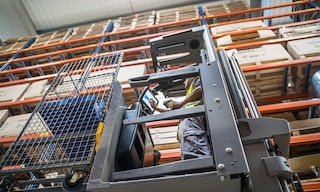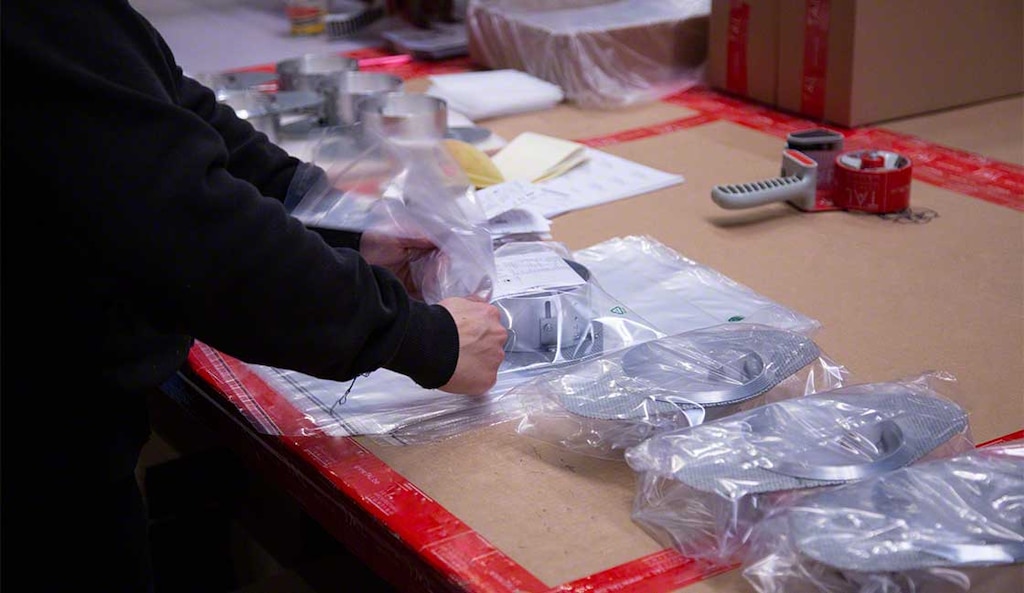
First mile delivery: the start to a successful shipment
Although less well-known than last-mile delivery, first-mile delivery is equally if not more crucial. If everything goes wrong at the beginning of the supply chain, there’s no point in optimizing the end stage.
That’s why companies place so much importance on having an efficient, well-connected logistics infrastructure that can help them to take on any challenge.
In this post, we explain exactly which operations are involved in first-mile delivery, why it’s so important, and what solutions on the market can optimize this process.
What is first-mile delivery?
First-mile delivery is the phase or set of operations carried out at the start of any supply chain.
It is generally considered that the first mile begins just after a customer order is received and ends the moment that order is loaded onto the transportation vehicle that will deliver it to the end customer. The first mile can also include transportation to intermediate points of the chain, such as distribution centres and transit warehouses. Between the order request and the delivery to the end customer, a series of operations take place, namely order preparation, packaging, validation, and transportation to intermediate facilities or centres.
Depending on the industry, first-mile delivery can be interpreted in various ways and emphasize stages that are more specific than those contained in the general definition. For example, a manufacturer might limit the first mile to the transportation of finished products from its production plant to the distribution centre. In the case of a retailer, first-mile delivery would involve transportation of the goods from a supplier’s warehouse to the retailer’s own facility.

Difference between first-mile and last-mile delivery
The main difference between first-mile and last-mile delivery lies in the order in which they’re executed. As the name indicates, the first mile is the first stage of the supply chain. The last mile is the final phase in which the product is delivered directly to the end customer.
The first mile begins after an order is placed. It includes the preparation of that item and ends when the merchandise is loaded on the last means of transportation that will bring it to the end user. And this is where the last mile begins, which consists of delivering the order to the customer, whether via in-store pickup (click and collect), at home, at the office, at a delivery point, or at a smart locker. This is the last step of the supply chain.
Another difference between the first-mile and last-mile delivery has to do with distribution. First-mile deliveries tend to be compact yet bulky unit loads (palletized goods and large order groupings), making their transportation and subsequent delivery much easier. The last mile, on the other hand, is more complex and labor-intensive, as it deals with smaller volumes, specifically, products that customers will receive. Therefore, it poses a huge challenge for companies, since they must satisfy their customers with quick deliveries and, at the same time, bring transportation and staff costs down to a minimum.
First-mile delivery operations
From the time the order enters the system until just before its transportation to the end customer, the following operations take place:
- Picking. This operation is paramount, as order processing costs can exceed 60% of a facility’s total operating costs. Customer orders need to be prepared and then sent to the consolidation and/or dispatch area as fast as possible and without error.
- Consolidation and packaging. There’s no use in preparing orders quickly only to invest excessive time in consolidating and packaging them. In this phase, the units picked are checked, the order is conditioned and then moved to the dispatch area, the order documentation is printed, etc.
- Dispatch and loading onto the transport truck. Once the order is closed and all its documentation is in order, it is loaded onto the transport truck, which is charged with leaving the facility and arriving at its destination at the agreed time and in perfect condition.
- Transportation to intermediate points along the supply chain. The first mile sometimes includes operations such as transportation of the finished product between a production centre and the central facility or, for example, transportation of orders to a transit warehouse as a step prior to their delivery to the end customer.
Broadly speaking, these are the main operations involved in first-mile delivery. Their optimization is essential in order for last-mile delivery to also be successful.

Automation for optimizing first-mile delivery
The digitalisation of logistics is your best ally when it comes to making first-mile delivery more competitive and profitable.
The first step is to begin preparing the order as soon as you receive the customer request. For this to be possible, there needs to be direct and automatic communication between the sales channels and the warehouse. The best way to do this is through a warehouse management system (WMS). Easy WMS, for instance, features the Marketplaces & Ecommerce Platforms Integration module, which automatically connects your online store with your facility so that operators can start preparing orders more promptly. The WMS for Ecommerce module, meanwhile, organizes items as they arrive at the warehouse and, based on the list of pending orders, sorts them into single-unit orders, multi-unit orders, or items to be stored. Additionally, the Store Fulfillment module integrates the WMS in the warehouse with the point-of-sale terminals, syncing the stock at all these locations.
Once an order enters the system, management can be streamlined thanks to automation with the product-to-person picking method. This can be implemented, for example, in a miniload system (AS/RS for boxes) or at high-performance pick stations, which speed up this operation. There are also automatic picking assistance options, such as voice picking and put- and pick-to-light devices.
Lastly, day-to-day interactions between the facility and the transportation agencies can be digitized with Multi Carrier Shipping Software. This module provides companies with total control over the entire shipping process, enabling them to print labels compatible with the major transportation agencies and assign tracking numbers to each parcel directly from the warehouse, among other functions.

The importance of first-mile delivery
There’s no doubt that first-mile delivery is a vital logistics stage and that, with the e-commerce boom, logistics operators have been working tirelessly to minimize complications and obtain optimal customer satisfaction. But it’s also true that, to achieve success in the last mile, we need to be more effective in the first mile.
Ultimately, we need to be aware of the significance of first-mile delivery in Logistics 4.0. If you think your warehouse is efficient but could use some help improving picking management or the truck loading process, get in touch with Mecalux. Our team of professionals will help you achieve the efficiency your business and logistics systems deserve.
